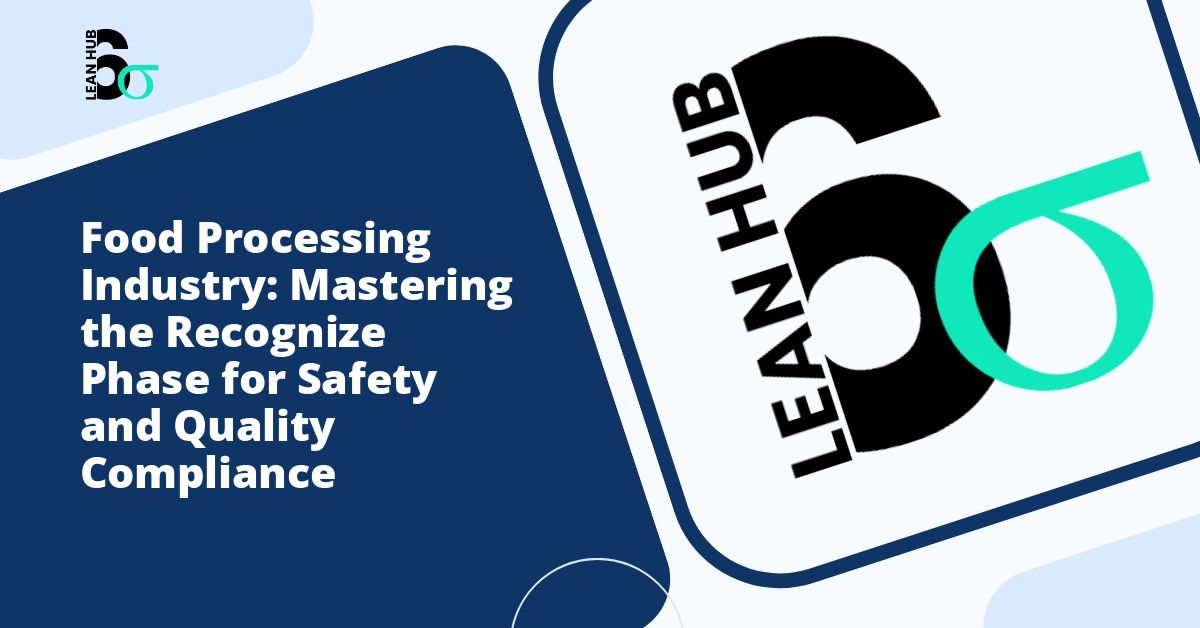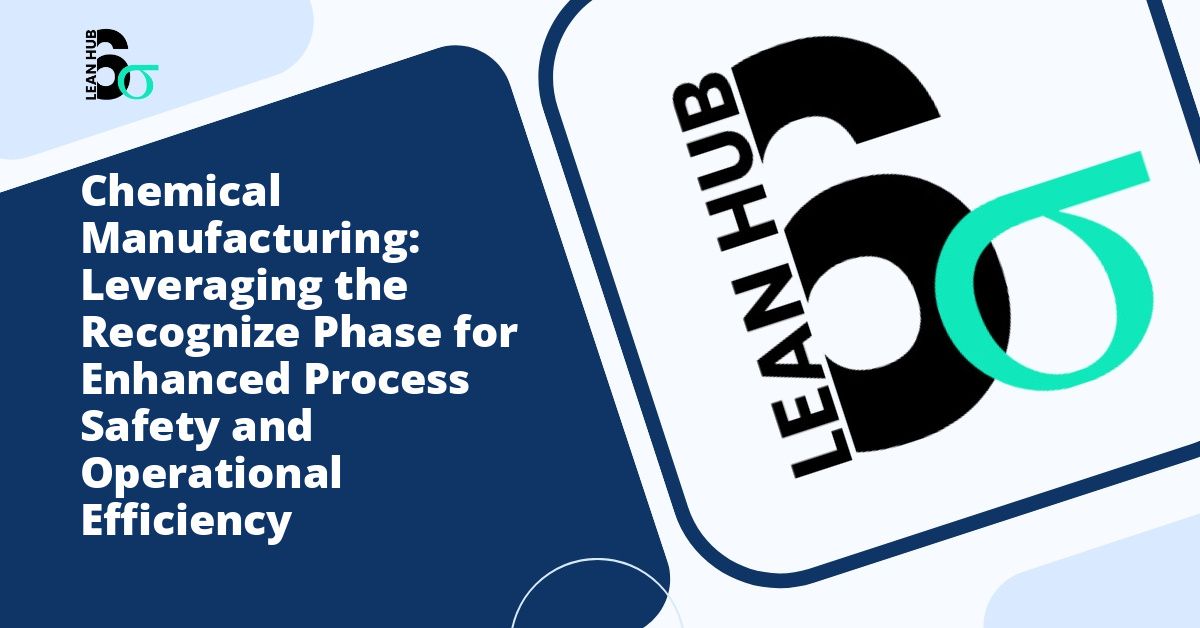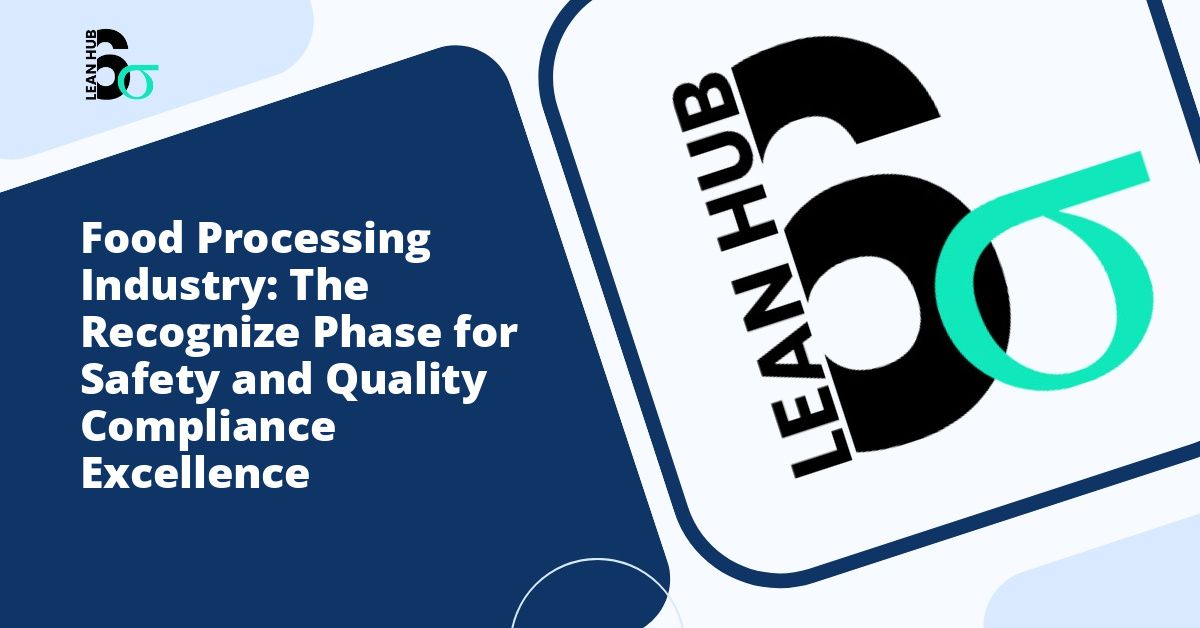The food processing industry operates under constant scrutiny, where a single oversight can result in product recalls, regulatory penalties, or worse, harm to consumers. In this high-stakes environment, implementing systematic approaches to identify and address potential safety and quality issues has become not just beneficial but essential. The recognize phase, a critical component of lean six sigma methodology, offers food processors a structured framework to identify problems, assess risks, and establish a foundation for continuous improvement.
Understanding the Recognize Phase in Food Processing
The recognize phase serves as the entry point for any quality improvement initiative within the food processing sector. This phase involves identifying existing problems, understanding current processes, and recognizing opportunities for enhancement before implementing solutions. Unlike reactive approaches that address issues after they occur, the recognize phase empowers organizations to proactively identify potential hazards and inefficiencies. You might also enjoy reading about Cross-Functional Collaboration in Problem Recognition: Best Practices for Success.
In the context of food safety and quality compliance, this phase requires thorough observation, data collection, and stakeholder engagement. Food processors must examine their operations through multiple lenses, considering regulatory requirements, consumer expectations, operational efficiency, and safety protocols. The goal is to develop a comprehensive understanding of where the organization stands and what challenges need addressing. You might also enjoy reading about Building a Winning Business Case in the Lean Six Sigma Recognize Phase.
Why the Recognize Phase Matters for Food Safety
Food safety incidents can have devastating consequences for businesses and consumers alike. The Centers for Disease Control and Prevention estimates that foodborne illnesses affect millions of people annually, making prevention a critical priority. The recognize phase provides food processors with the tools to identify vulnerabilities before they escalate into serious problems. You might also enjoy reading about What is the Recognize Phase in Lean Six Sigma? A Complete Guide for Beginners.
By systematically examining processes during the recognize phase, organizations can detect patterns that might indicate underlying issues. These might include inconsistent temperatures during storage, variations in ingredient quality, inadequate sanitation procedures, or insufficient employee training. Identifying these concerns early allows companies to address root causes rather than merely treating symptoms.
Key Components of the Recognize Phase
Process Mapping and Documentation
The first step in the recognize phase involves creating detailed maps of all food processing operations. This documentation should capture every step from raw material receipt through finished product distribution. Process mapping reveals bottlenecks, redundancies, and critical control points where safety or quality could be compromised.
For food processors, this means documenting not only the main production line but also supporting operations such as cleaning procedures, equipment maintenance schedules, and quality testing protocols. Visual process maps help teams see their operations objectively and identify areas requiring attention.
Data Collection and Analysis
The recognize phase relies heavily on data to paint an accurate picture of current performance. Food processors should gather information from multiple sources:
- Quality control test results and inspection reports
- Customer complaints and feedback
- Production records and batch documentation
- Employee incident reports and near-miss documentation
- Equipment performance data and maintenance logs
- Regulatory inspection findings and audit results
- Supply chain performance metrics
This comprehensive data collection enables organizations to identify trends and patterns that might not be apparent through casual observation. The lean six sigma approach emphasizes data-driven decision making, ensuring that improvement efforts target genuine problems rather than perceived issues.
Stakeholder Engagement
Effective recognition requires input from everyone involved in food processing operations. Frontline workers often possess valuable insights about daily challenges and potential safety risks that management might overlook. Quality assurance teams can provide technical perspectives on compliance requirements, while maintenance personnel understand equipment limitations and reliability issues.
Conducting interviews, facilitating focus groups, and encouraging open communication during the recognize phase helps organizations tap into this collective knowledge. Creating an environment where employees feel comfortable reporting concerns without fear of reprisal is essential for thorough problem identification.
Applying Lean Six Sigma Principles to Recognition
The lean six sigma methodology combines lean manufacturing principles with six sigma quality management techniques, creating a powerful framework for improvement. During the recognize phase, these principles guide food processors toward systematic problem identification and prioritization.
Eliminating Waste
Lean principles focus on identifying and eliminating waste in all forms. In food processing, waste extends beyond spoiled products to include unnecessary motion, excess inventory, waiting time, overprocessing, and defects. The recognize phase helps organizations spot these inefficiencies and understand their impact on both quality and safety.
For example, excessive handling of food products increases contamination risk while also consuming time and labor. Recognizing such waste allows processors to redesign workflows that simultaneously improve efficiency and safety.
Reducing Variation
Six sigma methodologies emphasize consistency and reduction of variation. In food processing, variation can manifest as inconsistent product quality, fluctuating process parameters, or unpredictable equipment performance. During the recognize phase, teams identify sources of variation that could compromise food safety or quality standards.
Statistical tools help quantify variation and determine whether processes operate within acceptable limits. This analytical approach enables food processors to distinguish between normal process fluctuations and significant deviations requiring intervention.
Practical Steps for Implementing the Recognize Phase
Step 1: Define the Scope
Begin by clearly defining which processes, products, or areas will be examined. Attempting to recognize problems across an entire facility simultaneously can be overwhelming. Instead, focus on specific production lines, particular products, or distinct operational areas.
Step 2: Assemble a Cross-Functional Team
Create teams that include representatives from production, quality assurance, maintenance, sanitation, and management. This diverse perspective ensures comprehensive problem identification and builds organizational buy-in for subsequent improvement efforts.
Step 3: Conduct Gemba Walks
Gemba, a Japanese term meaning “the real place,” refers to observing processes where work actually happens. Regular gemba walks allow teams to observe operations firsthand, identify abnormalities, and engage with frontline workers. These walks are invaluable during the recognize phase for understanding actual practices versus documented procedures.
Step 4: Analyze Regulatory Requirements
Food processors must thoroughly understand applicable regulations, including FDA requirements, HACCP principles, and relevant international standards. The recognize phase should include a gap analysis comparing current practices against regulatory expectations, identifying areas of non-compliance or vulnerability.
Step 5: Prioritize Identified Issues
Not all recognized problems require immediate attention. Use risk assessment tools to prioritize issues based on their potential impact on food safety, regulatory compliance, and business operations. Focus initial improvement efforts on high-priority concerns while documenting others for future action.
Common Challenges and Solutions
Food processors often encounter resistance when implementing the recognize phase. Employees may fear that identifying problems will reflect poorly on their performance, or management might resist acknowledging systemic issues. Overcoming these challenges requires clear communication about the recognize phase’s purpose: improving systems rather than blaming individuals.
Another common challenge involves data quality and availability. Many food processing facilities have incomplete records or rely on paper-based documentation systems that make analysis difficult. Investing in digital record-keeping and data management systems pays dividends during the recognize phase and beyond.
Moving Beyond Recognition
The recognize phase establishes the foundation for subsequent improvement activities. Once problems are identified and prioritized, organizations can move forward with root cause analysis, solution development, and implementation. However, the value of recognition extends throughout the improvement lifecycle, as ongoing monitoring and periodic reassessment ensure sustained compliance and quality.
Food processors who master the recognize phase position themselves for long-term success in an increasingly complex regulatory environment. By systematically identifying risks and opportunities, these organizations build cultures of continuous improvement where safety and quality become embedded in daily operations rather than afterthoughts.
Conclusion
The recognize phase represents a critical investment in food safety and quality compliance. By applying lean six sigma principles to systematically identify problems, assess risks, and understand current performance, food processors create strong foundations for improvement initiatives. This structured approach helps organizations move from reactive firefighting to proactive risk management, ultimately protecting consumers, preserving brand reputation, and ensuring regulatory compliance. As the food processing industry continues evolving, those who excel at recognition will be best positioned to adapt, improve, and thrive in an environment where safety and quality are non-negotiable priorities.








